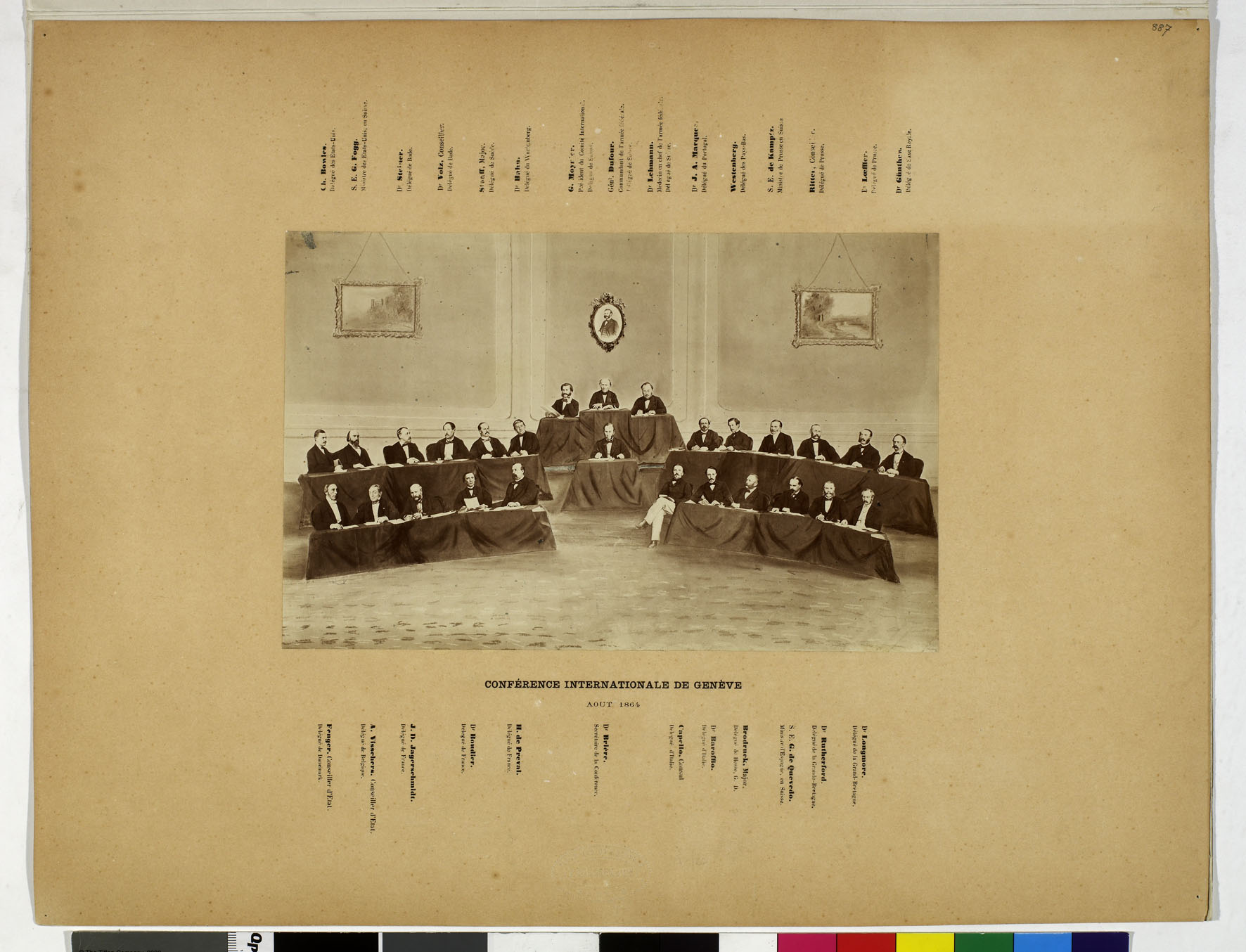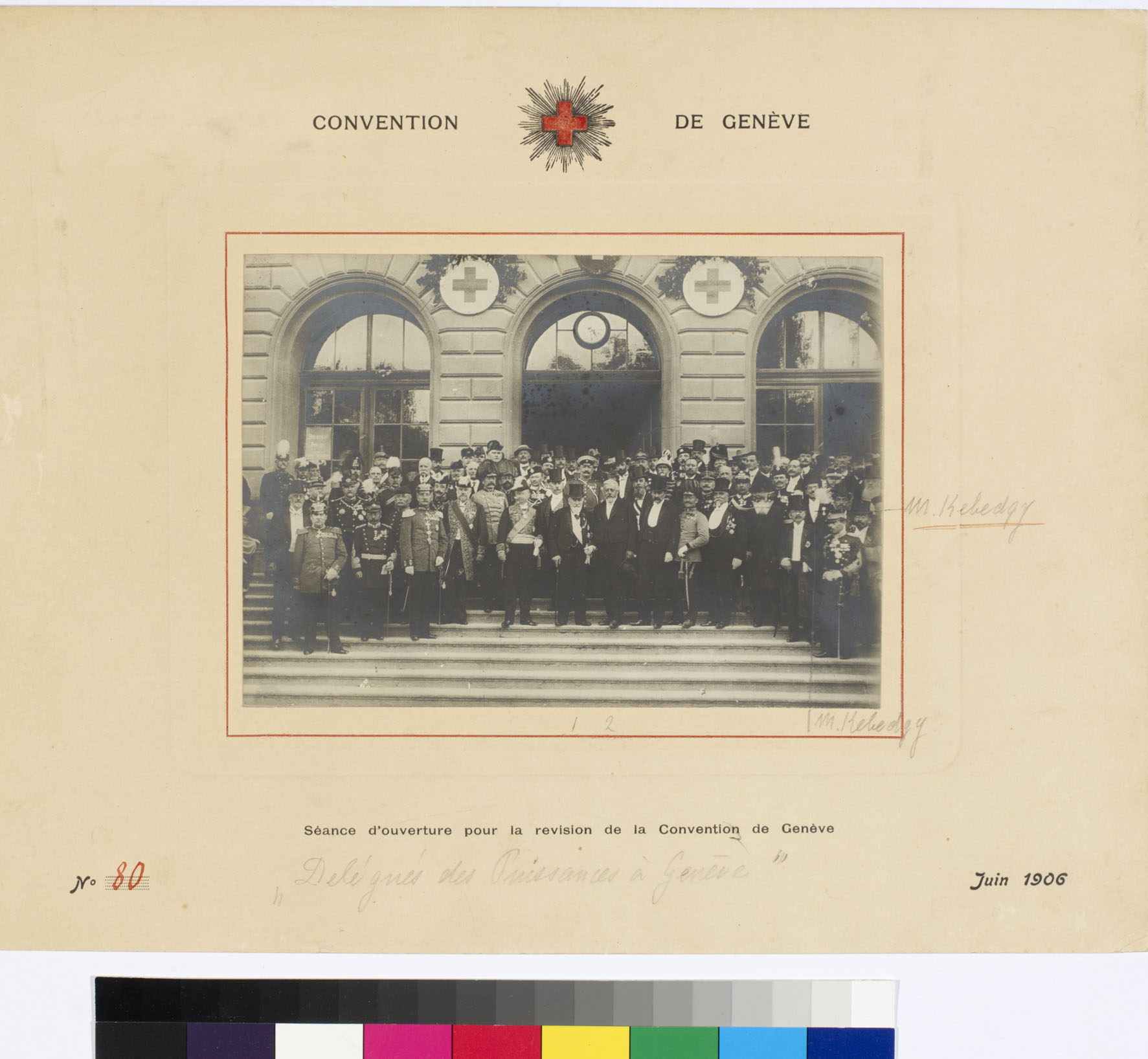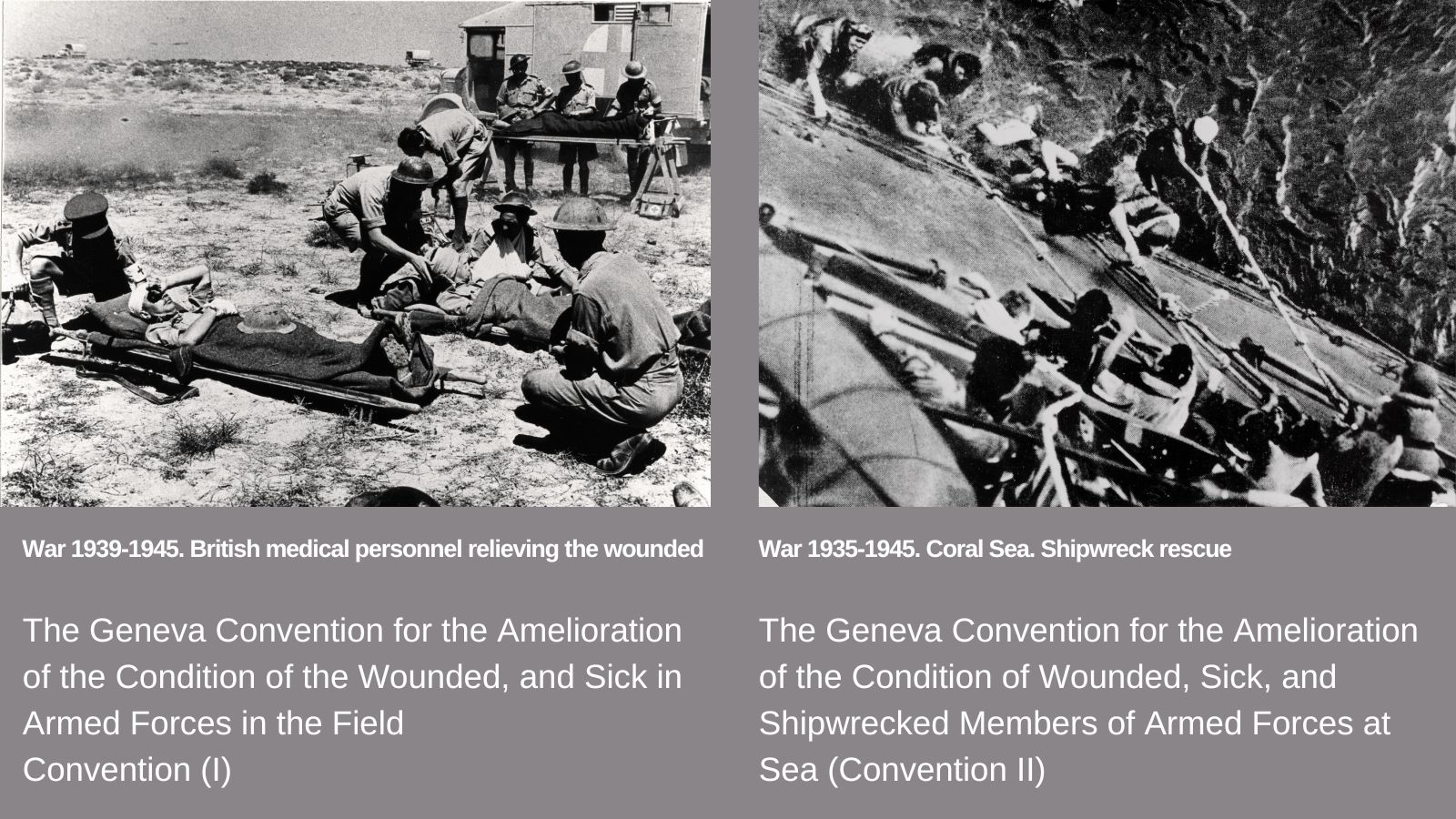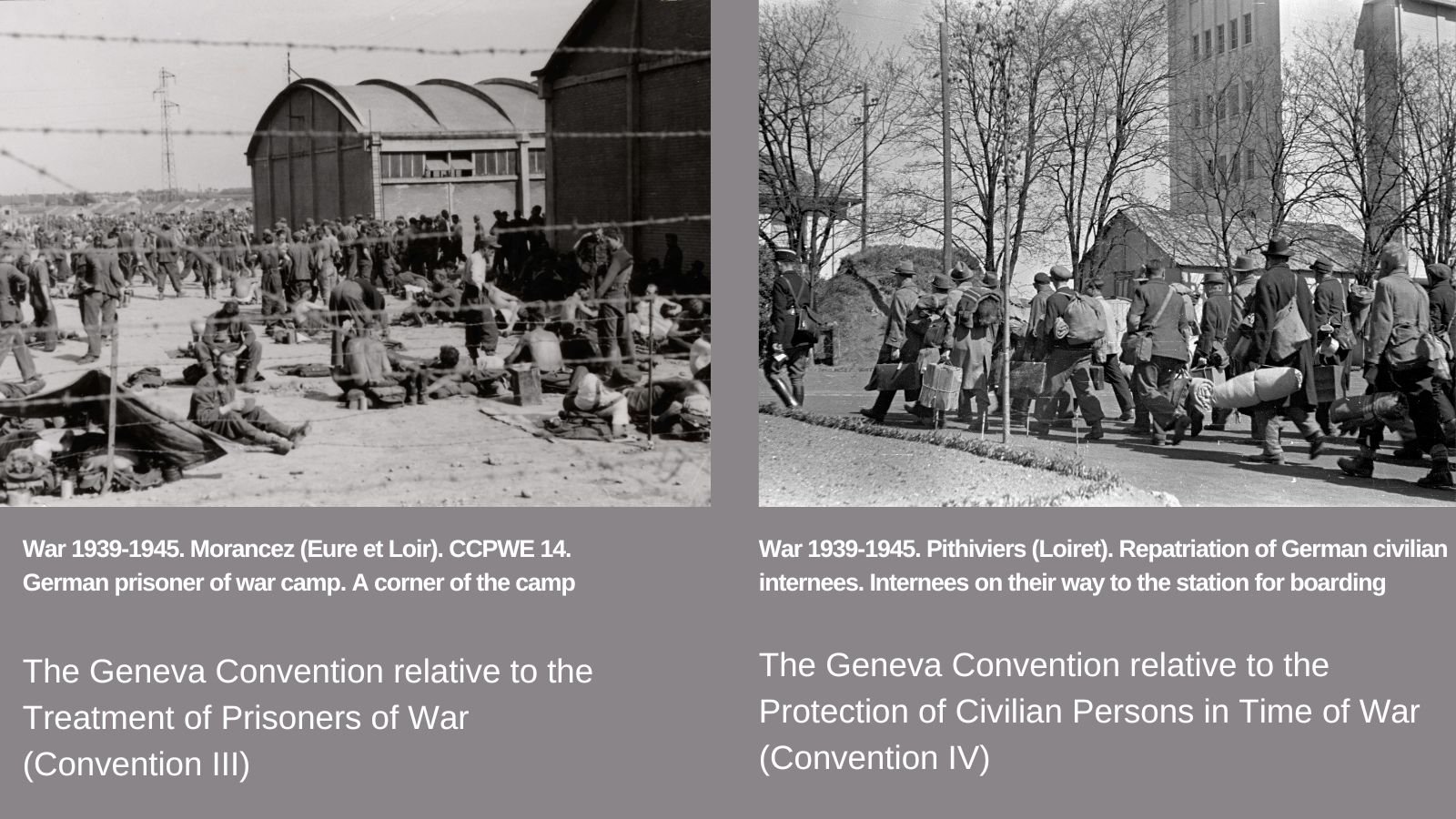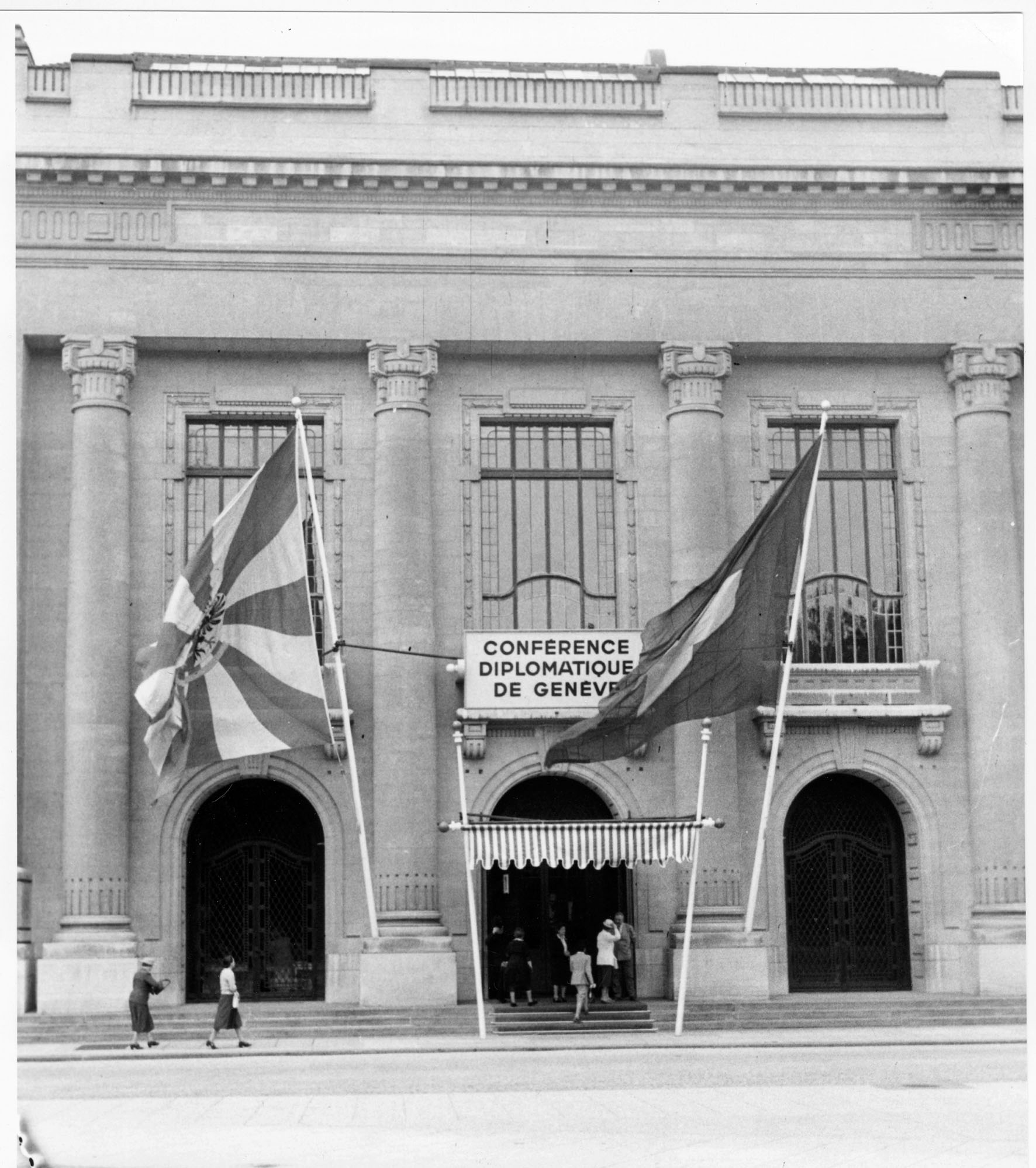The Geneva Conventions: 160 years of history
The Convention for the Amelioration of the Condition of the Wounded in Armies in the Field was adopted on 22 August 1864 in Geneva. From Henry Dunant's distressing eyewitness account of the battle of Solferino in 1859, this treaty marked the birth of international humanitarian law (IHL).
Since 1864, IHL has never ceased to evolve to protect human dignity in situations of armed conflict. Daniel Palmieri, the historian of the International Committee of the Red Cross, retraces the historical context and milestones of the Geneva Conventions from 1864 to 2005.
Internationally renowned, long before the 19th century, Geneva was famous not only as the city of Calvin and the birthplace of Rousseau but also for its many scientists and scholars. However, the founding of the International Committee of the Red Cross (ICRC) in February 1863 marked Geneva's début on the international political stage.
In August 1864, at the initiative of the ICRC, the Swiss government organized a diplomatic conference attended by representatives of 15 European States and the United States of America to discuss the adoption of a convention to improve conditions for wounded soldiers on the battlefield.
Drafted by the ICRC, the treaty established the obligation to provide aid to all wounded soldiers regardless of nationality, the neutrality (or inviolability) of medical establishments and their personnel, and the use of a distinctive emblem – a red cross on a white background – to specifically identify medical services.
The text was adopted on 22 August 1864 and immediately signed by 12 present States at the Conference. The 1864 Convention thus became the first universal and lasting treaty of international humanitarian law.
Following this milestone, Geneva came to be seen as a "neutral" location for diplomatic negotiations. The room in the Geneva city hall where the 1864 Conference was held is still known today as the "Alabama Room" in memory of a second diplomatic summit held within its walls, the Alabama Arbitration, between the United States and the United Kingdom.
In July 1906, 35 governments from all around the world attended the Diplomatic Conference for the Revision of the Convention, again in Geneva. They expanded the “Convention for the Amelioration of the Condition of the Wounded and Sick in Field Armies” to 33 articles (from 10 previously), addressing issues such as the burial or cremation of the dead. For the first time, the role of Civil Relief Societies (including the Red Cross and Red Crescent) was explicitly recognized.
A third Diplomatic Conference was convened in Geneva in July 1929. This meeting had two objectives: first, to revise the 1906 Convention and, second, to draft a new international convention focusing on prisoners of war. Representatives of 47 governments gathered in Geneva's Electoral Hall. (This building burnt down in 1964 and was replaced by the University of Geneva's Dufour building).
Drawing on the experience of the First World War, the representatives set to work updating the Convention, among others to ensure that its protections for the wounded and sick reflected recent technological advances. The 1929 Convention thus included a new article extending the immunity of medical services to medical aircraft.
The protection of prisoners of war, however, required an entirely new treaty. The First World War had amply demonstrated that the protections afforded by the Hague Conventions of 1899 and 1907 were sorely lacking. In response, as early as 1921, the ICRC called for a separate convention covering this specific category of victims of war.
Adopted on 27 July 1929, the Convention relative to the Treatment of Prisoners of War complemented the provisions of the Hague Conventions. Among its main innovations, it banned reprisals and collective punishment, defined working conditions for prisoners of war, and established their right to appoint representatives to meet with detaining authorities and representatives of neutral states.
Immediately after the Second World War, it was apparent that further revisions to the existing Conventions were again urgently needed, with the addition of several new texts.
Between April and August 1949, Geneva hosted 63 governmental delegations for a series of diplomatic discussions. Their purpose was to revise the two 1929 Conventions, to amend the articles of the Hague Peace Conferences of 1899 and 1907 relative to war at sea in line with the 1864 Convention, and, lastly, to draft a new convention addressing the protection of civilians in time of war.
These discussions – based on drafts prepared by the ICRC – resulted in the adoption, on 11 August 1949, of four treaties which, unlike the 1864, 1906, and 1929 conventions, were officially named the "Geneva Conventions" by the Diplomatic Conference in recognition of Geneva's role as the birthplace of the Red Cross and the home of the ICRC. These are:
- The Geneva Convention (I) for the Amelioration of the Condition of the Wounded, and Sick in Armed Forces in the Field, 1949
- The Geneva Convention (II) for the Amelioration of the Condition of Wounded, Sick and Shipwrecked Members of Armed Forces at Sea, 1949
- The Geneva Convention (III) relative to the Treatment of Prisoners of War, 1949
- The Geneva Convention (IV) relative to the Protection of Civilian Persons in Time of War, 1949
The Geneva Conventions were signed on 12 August 1949 by 18 States at the Electoral Hall in Geneva. A second signing session was held on 8 December 1949.
As soon as the Geneva Conventions were adopted, it was realized that additional rules protecting civilians from the effects of armed conflict were needed. The ICRC immediately began working on a draft, but the political environment was not conducive to the organization of a diplomatic conference. It was not until 1973 that the ICRC, after several consultations with government experts, was invited to submit two additional draft protocols relative to the protection of victims of international and non-international conflicts.
The Federal Council convened a diplomatic conference in four stages between 1974 and 1977. The two Additional Protocols to the Geneva Conventions were adopted on 8 June 1977 at the Geneva International Conference Centre (CICG).
Lastly, a Diplomatic Conference was convened in December 2005. On 8 December, the signatories of the Geneva Conventions of 1949 adopted a third Additional Protocol recognizing a third distinctive emblem, the Red Crystal, with the same international status as the Red Cross and Red Crescent emblems.
Text by Daniel Palmieri, ICRC Historian
